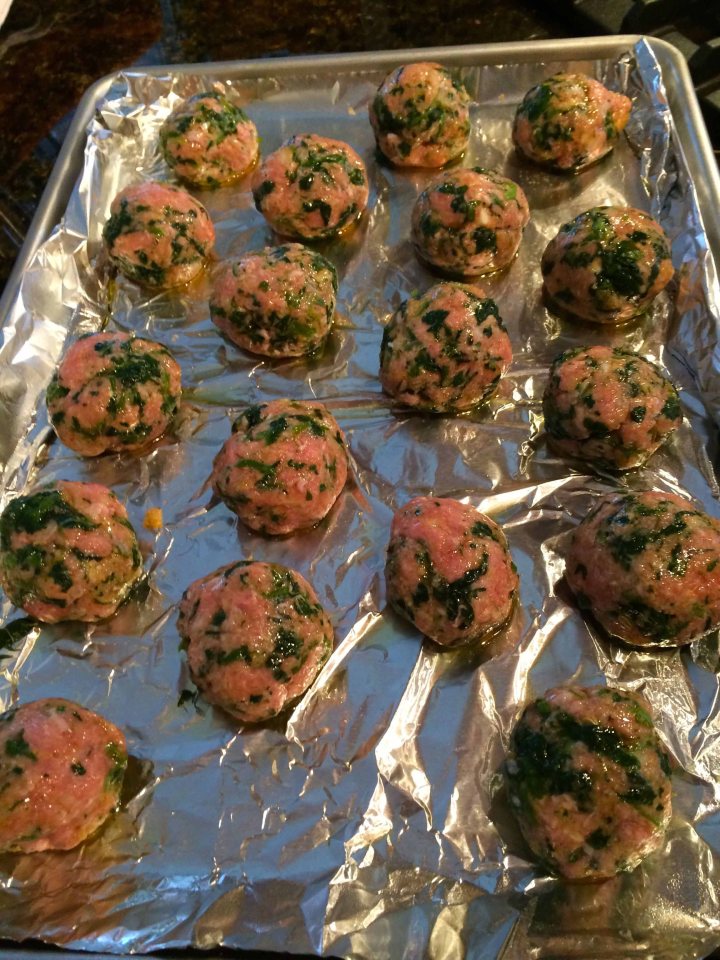
When friends ask me which style of Italian cooking I enjoy the most, I usually say “Roman.” It seems to meld the earthy richness of the north with the sultry spice of the south. My go-to book for Roman cooking is David Downie’s Cooking the Roman Way, and it is here where I found the recipe for today’s post: Martino al Forno, Monkfish Baked on a Bed of Lemony Potatoes. (The book is sadly out of print, but is currently available in Kindle format.)
The fish, coated with olive oil and breadcrumbs, is baked slowly for about 35 minutes on a bed of thinly sliced Yukon gold potatoes dressed with olive oil, lemon, parsley, and fine breadcrumbs. What’s great about this dish is how the creamy, lemony potatoes highlight the rich buttery flavors of the monkfish, sometimes called “the poor man’s lobster.” It’s Roman cooking at its best.
I halved this recipe when I prepared it for two, using half of fish and potatoes called for, but slightly more than half measures of the other ingredients.
Martino Al Forno Adapted from Cooking the Roman Way (Yields 4 servings)
2 pounds Monkfish fillets (Try to get fillets that are approximately equal in size and that are not too thin to ensure even cooking.)
2 pounds Yukon gold potatoes washed, peeled, and sliced 1/8 inch thick. (Use a mandolin for evenly sliced potatoes.)
4 Tbs extra virgin olive oil
Kosher salt and fresh ground black pepper
4 heaping Tbs of fine breadcrumbs (I only had seasoned Italian breadcrumbs on hand and they worked well.)
4 cloves garlic, unpeeled and mashed
4 heaping Tbs fresh Italian parsley minced (Be careful not to over mince the parsley as doing so leaves a lot of the herb’s flavor on the cutting board.)
1 lemon juiced (The next time I make this dish, I’ll also add some of the zest of the lemon to the potatoes.)

1. Preheat oven to 375° F.
2. Rinse fillets, pat dry with paper towels, and place on a platter. A paper towel on top of the fish will keep them dry.
3. Place the peeled, sliced potatoes in an oven-proof baking dish and drizzle with 2 Tbs of the oil. Season with generous pinches of salt and pepper. Toss lightly to evenly coat. (Be careful not to tear the slices as you toss.) Sprinkle in 2Tbs of the bread crumb and toss again. Arrange the potatoes in an even layer.
4. Distribute the smashed garlic cloves evenly over the potatoes and sprinkle with a generous pinch of the parsley.
5. Drizzle the patted-dry fish fillets with 1Tbs of the olive oil and gently rub it into the fish. Sprinkle the fish with the remaining 2 Tbs of the breadcrumbs and turn the fillets to coat them evenly with the crumbs.

6. Place the fillets in the baking dish over the potatoes and the garlic. (I folded under the thin ends of the fillets to ensure even cooking.) Sprinkle any breadcrumbs that are left behind the platter that held the fish.
7. Sprinkle 1 Tbs of lemon juice over the fish and the potatoes and then sprinkle with small pinches of salt, pepper, and parsley.
8. Bake for about 30 to 35 minutes, until the potatoes are tender on the inside and crisp on the edges.
9. Remove from the oven and sprinkle the remaining parsley over the fish. Drizzle with the remaining olive oil (1 Tbs) and the remaining lemon juice.
Serve immediately on heated plates.
Wine Pairing: Chilled Frascati, Sauvignon Blanc, Dry Riesling

















